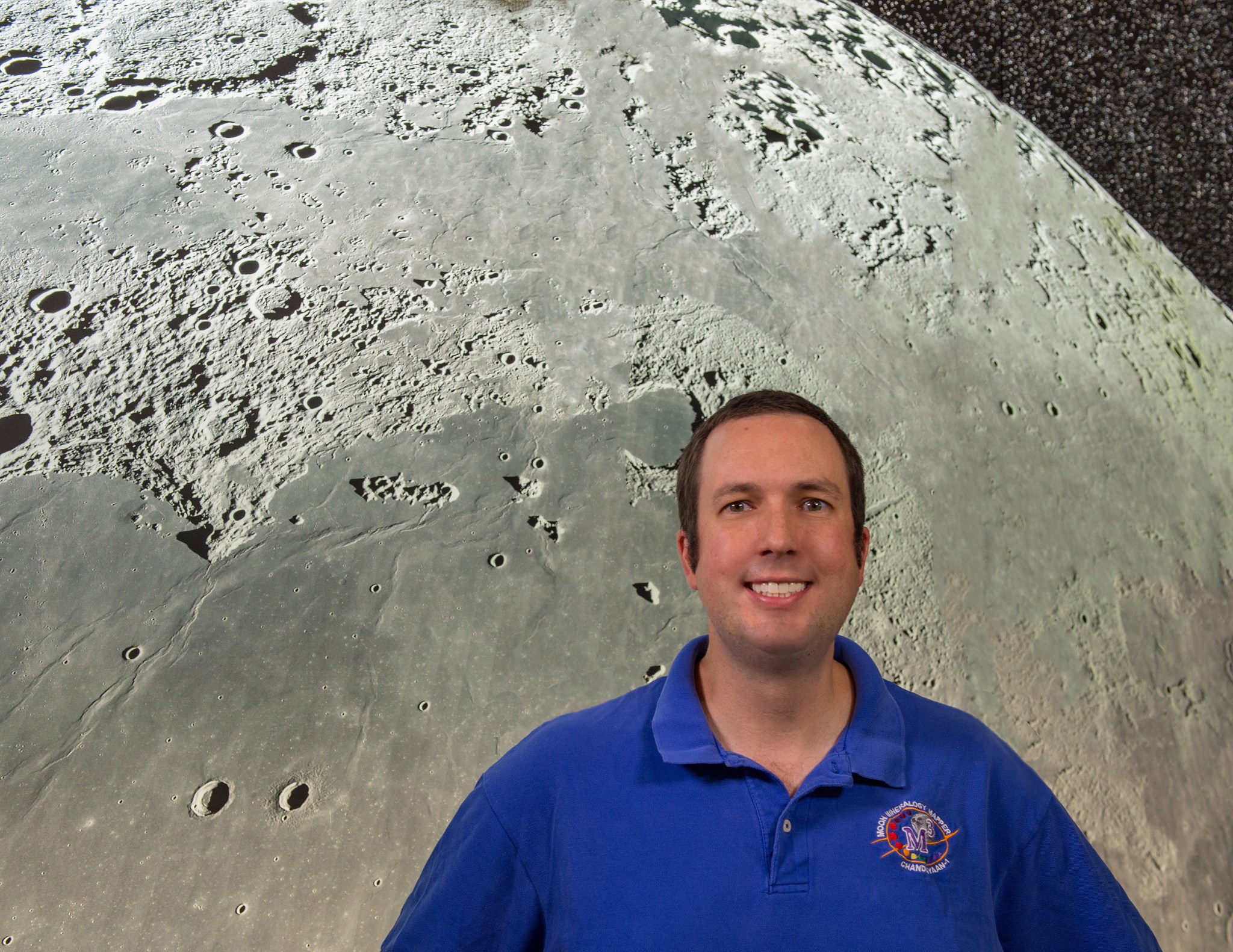
A team of NASA scientists wants to draw a more complete picture of where water exists on the Moon and whether it migrates across the lunar surface, including in the permanently shadowed regions that haven’t seen sunlight in perhaps a billion years or more.
The first hint of potential water at both lunar poles came in 1994, with the Clementine mission flown jointly by NASA and the Department of Defense. Since then, subsequent missions, such as Chandrayann-1, the Lunar Reconnaissance Orbiter, and the Lunar CRater Observation and Sensing Satellite, have detected three flavors of volatiles or chemicals that evaporate rapidly: a global layer of hydroxide and water that’s just one molecule thick, subsurface polar water ice, and polar surface water frost.
Past Missions Altered Perspectives
“The remote detection of lunar volatiles, specifically water and hydroxide, has dramatically changed our perspective of a dry Moon to a wetter Moon, both within and on the surface,” said scientist Noah Petro. “However, these missions were not able to draw a complete picture of the distribution and possible mobility of volatiles.”
With funding from NASA’s Planetary Science Deep Space SmallSat Studies, or PSDS3, program, Petro and his team, which also includes University of Hawaii researcher Paul Lucey as well as Goddard instrument experts, will study a CubeSat mission concept called the Mini Lunar Volatiles Mission, or MiLUV.
The six-unit MiLUV would detect water on the lunar surface using a laser spectrometer that traces its heritage to similar Goddard-developed lidar-type instruments built to map the topographies of Mars and the Moon.
“Understanding volatiles in the solar system is a major planetary-science objective for NASA,” Petro said. “We believe that the best-suited instrument to answer where these volatiles exist and their possible movement is a laser spectrometer that measures surface reflectance at several wavelengths. The benefit of this approach is that by using an active instrument, we can measure in areas that are not illuminated.”
Repackaging Existing Laser Spectrometer
With the funding, the team is studying the repackaging of an existing instrument concept, the Lunar Ice Lidar Spectrometer, or LILIS, to determine if it might fit onto a small satellite and performing an engineering study to show that the agency could successfully fly MiLUV, Petro added.
The instrument is an adaptation of successful planetary lidar systems flown on the Lunar Orbit Laser Altimeter and the Mercury Laser Altimeter. These instruments bounced laser light off the surfaces of the Moon and Mercury, respectively, and used the returning signal to map their topographies. “We want to expand the instrument’s capabilities beyond topography,” Petro said.
Unlike the previous instrument that used a single wavelength, LILIS would include a multi-band spectrometer. The laser would bounce light off the lunar surface and the spectrometer would analyze the reflected or returning signal to determine the presence of water and other volatiles.
Like all chemicals, water absorbs light at specific infrared wavelengths. By carefully tuning the instrument’s detectors to those wavelengths — in this case, 1.6 and 3.0 microns — scientists would be able to detect and then analyze the level of water in the laser’s vertical path. The more water along the light’s path, the deeper the absorption lines.
Around-the-Clock Measurements
Because the instrument carries its own light source — the laser — the mission literally could operate day and night, regardless of sunlight conditions. This means MiLUV also could study the Moon’s permanently shadowed regions, gathering a complete data set that would show how surface volatiles vary as a function of lunar time, if at all, Petro added.
“This is a focused science mission, ideal for a CubeSat mission,” Petro said. “It directly addresses the science goal of understanding how the chemical and physical processes in our solar system operate, interact, and evolve. We’re hopeful that our study will show this is a feasible mission.”
Small satellites, including CubeSats, play a valuable role in the agency’s exploration, science, technology and educational investigations. These miniature satellites provide a low-cost platform for NASA science missions, including planetary exploration, Earth observation, and fundamental Earth and space science. They are a cornerstone in the development of cutting-edge NASA technologies like laser communications, satellite-to-satellite communications and autonomous movement.
For more Goddard technology news, go to: https://www.nasa.gov/wp-content/uploads/2020/01/fall_2017_final_lowrez.pdf?emrc=381eff
Lori Keesey
NASA’s Goddard Space Flight Center

























